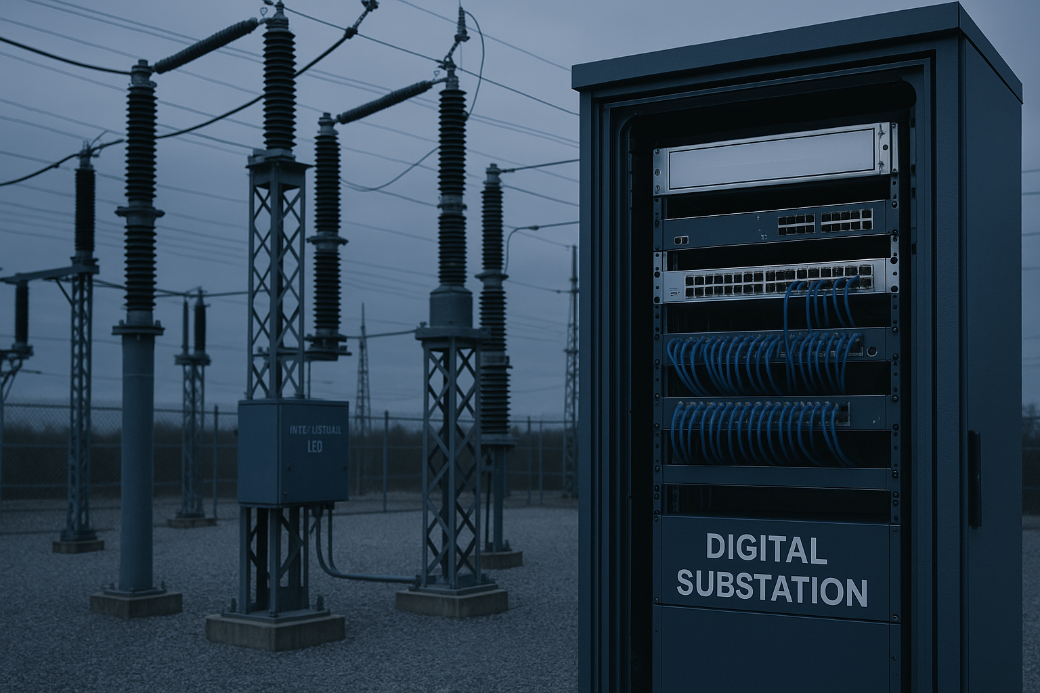Energy and Utilities Industry

Each industry has it's own challenges, requirements, and specialities. So has the Energy and Utilities industry, therefore it is important to undestand the specific needs to find the right solutions. This is where NetTimeLogic comes in. We have several years of experience in this industry and can help you to developa best in class product with our cores and services.
The Energy and Utilities industry is currently in a phase of change pushing into the direction of so called smart grids.
In traditional setup all sensors and actors were connected directly to one IED which would handle then for example protection algorithms. This means a traditional setup is normally a centralized setup. This has several drawbacks: first the IED has to be close to the measurement and switching points due to the fact that analog signals from the sensors have to be fed to the transformers on the IED, second interoperability between different sensors is not given, third sensor data is only available for one IED, etc.
A smart grid unlike the traditional grid setup is a full digital environment with all nodes interconnected and smart devices which share and consume data with/from multiple other devices in a standardized manner. This means a smart grid is a decentralized setup.
A decentralized setup requires a couple of things to be interoperable: a standardized communication channel, a standardized time synchronization functionality and a standardized data model. These points are defined in IEC 61850 which is the most important standard when it comes to smart grids. IEC 61850 choose Ethernet as the communication channel, PTP (IEEE 1588) as the time synchronization protocol and defines data models for exchanging data.
Time synchronization is an important feature in a decentralized setup, since sensor data from multiple sensor must be comparable which can be done based on synchronized timestamps (e.g. sampled values according to IEC 61850-9-2).
Traditionally time was distributed either via PPS, IRIG, GPS or NTP. However, PPS and IRIG require dedicated cabling for time distribution, NTP only gives a synchronization accuracy in the millisecond range and GPS is not everywhere available (e.g. in buildings).
PTP on the other hand allows time synchronization in the sub-microsecond range via the same network where data is exchanged. But for PTP to work, all nodes in a network must support PTP, e.g. Switches as PTP Transparent Clocks, IEDs as PTP Boundary Clock and Sensors as PTP Ordinary Clock.
Also, since this is normally a very critical infrastructure, high availability is a crucial. For this IEC 61850 choose PRP and HSR (IEC 62439-3) as Ethernet network redundancy protocols. PRP and HSR duplicate frames on sending an do duplicate rejection on receiving, using two different paths of the network. The main difference between PRP and HSR is the network topology: PRP uses two independent networks, HSR uses a ring topology. PRP is normally used between Bays and HSR within the Bay. HSR has the advantage that no additional network equipment is required, but this also means that all nodes in a HSR network need to support HSR.
NetTimeLogic provides IP cores for the important protocols required by IEC 61850 and IP cores to connect to legacy equipment:
- PTP Ordinary Clock IP core: Provides time synchronization for an end node as time source or sink via PTP
- PTP Transparent Clock IP core: Provides time synchronization in a network device compensating residence times of PTP messages
- HSR and PRP IP core: Provides network redundancy
- PPS Slave IP core: Allows to synchronize to a legacy device via PPS
- PPS Master IP core: Allows to synchronize legacy devices via PPS
- IRIG Slave IP core: Allows to synchronize to a legacy device via IRIG
- IRIG Master IP core: Allows to synchronize legacy devices via IRIG
- Signal Timestamper IP core: Allows to timestamp events and signals together with data based on the synchronized clock
- Signal Generator IP core: Allows to generate signal patterns based on the synchronized clock
All cores can be combined as required.
Contact us for more information.

